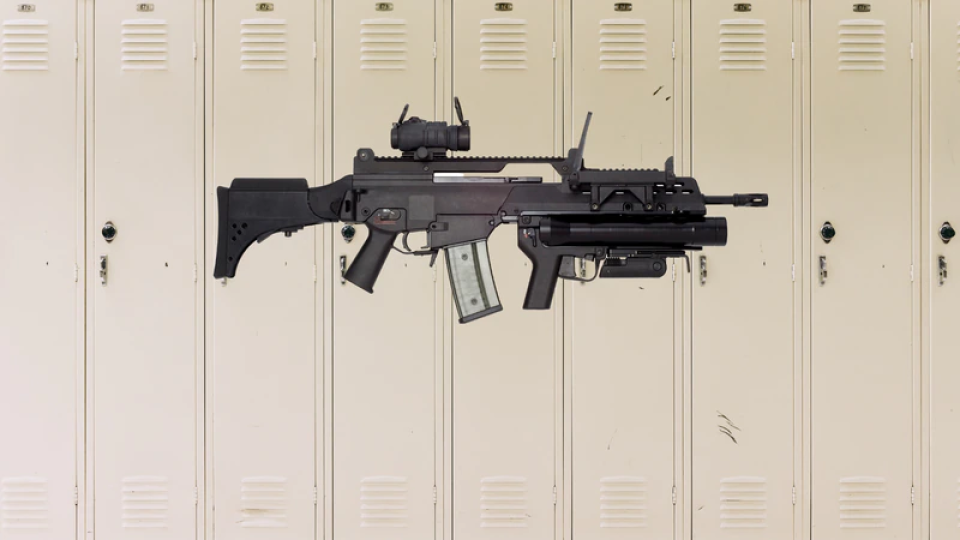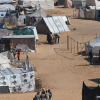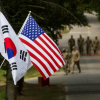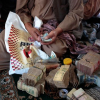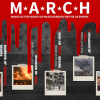By Keith Massey
I am more afraid to teach in high school than the time when I served in Iraq.
With my Ph.D minor in Arabic, I applied to the National Security Agency after 9/11 and would work there for four years. In 2004, I served in Iraq, earning the Global War on Terrorism Civilian Service Medal for my contributions there. I left the NSA in 2006 to pursue a career as a Latin teacher.
My life today includes teaching the finer points of Latin grammar, writing letters of recommendation for young people dreaming of their next stage of life in college and greeting students with enthusiasm as part of front-door duty, which I have before homeroom. It has even included playing the role of Friar Lawrence four years ago in the drama club’s production of Romeo and Juliet.
But my life also now includes huddling the students into a corner of the classroom during lockdown drills.
I thought I was walking away from war in 2006 when I became a teacher.
But then came the Virginia Tech shooting (2007-33 people killed).
And then came Sandy Hook (2012-27 people killed).
Schools began implementing common-sense security measures to address the fact that schools were a “soft target” for such attacks. And what makes a school a target for someone who simply wants to kill as many people as possible is the population? It’s density.
On any given day, the simple fact is that all the children of high school age in the place I teach are in one building. This creates more population density there than exists in any random business of the same municipality. The businesses just a block from my high school don’t practice active shooter drills.
Then came the Orlando nightclub shooting (2016-49 people killed), which was a hate crime against the gay community, but also sought to maximize the number of deaths.
The 2017 Las Vegas shooting (61 people killed) is another example of someone who merely sought out the greatest population density to inflict a shocking amount of deaths.
And then came the Sutherland Springs church shooting (2017-26 people killed).
When I arrived in Iraq, I had been given a security briefing on what to do in the event of a mortar attack. That was our biggest security concern. I drilled running to a bunker during such an attack, but I was still paralyzed with fear and I just watched them fall the first time it happened. And no matter how many lockdown drills we do in schools, none of us knows how we will actually perform when faced with a real and imminent threat.
And then came the Marjory Stoneman Douglas High School shooting. in 2018 (17 people killed).
In response to that shooting, our school building now made significant changes to our security posture. Having consulted with experts who came and surveyed our facilities, we moved to a single point of entry that would be staffed and monitored. We conducted the state-mandated drills for a “lockdown,” in which we both quickly lock the door to the room and also instruct the students to move to a place where they are not visible to a potential gunman looking through the window of the door.
And then came Uvalde, Texas (2022-21 people killed)
This is not the fault of my district’s administration. They are searching for a solution to a problem that is not of their creation. They have in good faith tried to implement common-sense measures to bolster security. At some point, we must address what goes on outside the school building, instead of just trying to harden our buildings against attack. We cannot turn our school buildings into fortresses. This is a national issue that needs a national solution.
I am not naive. I know that the political climate makes any significant change to the overall availability of guns impossible. But I still hold on to the hope that common sense changes — the age at which one could buy a gun, waiting periods for purchasing a gun, the types of guns available, a rigorous database of people excluded from buying a gun because of legitimate concerns — could be enacted into law and would on some important level improve our current situation.
Something would be better than nothing. Until then, we will continue to conduct active shooter drills in our schools. And our young people will learn alongside a tangible fear for their lives.
Have we really just normalized that young people drill what to do when their lives are in imminent danger? I mean, I went to Iraq knowing and accepting that I was going to a war and could be killed there. Do we really accept that young people should be having the same feeling every morning when they pick up their backpacks to go to school?
Source: nj

